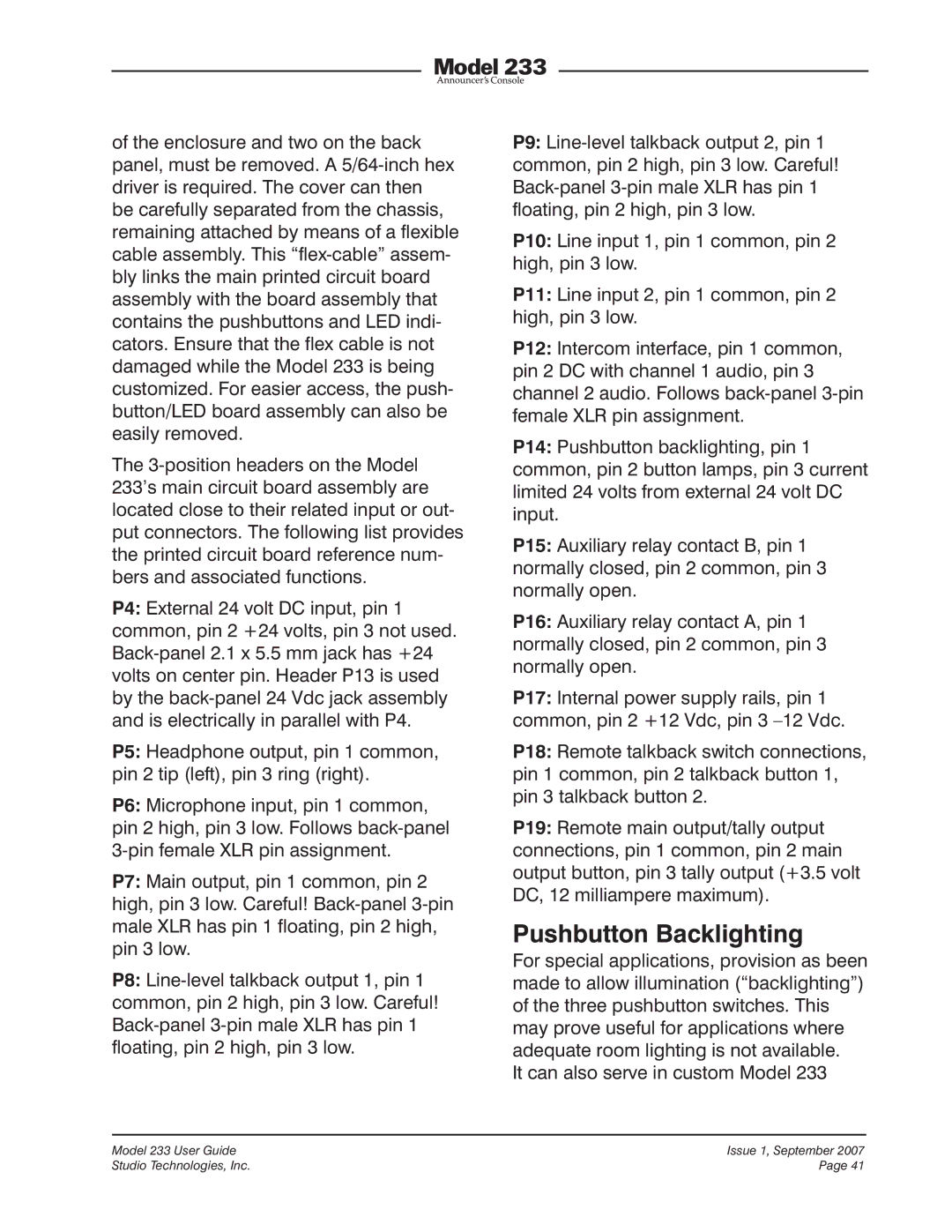
of the enclosure and two on the back panel, must be removed. A
The
P4: External 24 volt DC input, pin 1 common, pin 2 +24 volts, pin 3 not used.
P5: Headphone output, pin 1 common, pin 2 tip (left), pin 3 ring (right).
P6: Microphone input, pin 1 common, pin 2 high, pin 3 low. Follows
P7: Main output, pin 1 common, pin 2 high, pin 3 low. Careful!
P8:
P9:
P10: Line input 1, pin 1 common, pin 2 high, pin 3 low.
P11: Line input 2, pin 1 common, pin 2 high, pin 3 low.
P12: Intercom interface, pin 1 common, pin 2 DC with channel 1 audio, pin 3 channel 2 audio. Follows
P14: Pushbutton backlighting, pin 1 common, pin 2 button lamps, pin 3 current limited 24 volts from external 24 volt DC input.
P15: Auxiliary relay contact B, pin 1 normally closed, pin 2 common, pin 3 normally open.
P16: Auxiliary relay contact A, pin 1 normally closed, pin 2 common, pin 3 normally open.
P17: Internal power supply rails, pin 1 common, pin 2 +12 Vdc, pin 3
P18: Remote talkback switch connections, pin 1 common, pin 2 talkback button 1, pin 3 talkback button 2.
P19: Remote main output/tally output connections, pin 1 common, pin 2 main output button, pin 3 tally output (+3.5 volt DC, 12 milliampere maximum).
Pushbutton Backlighting
For special applications, provision as been made to allow illumination (“backlighting”) of the three pushbutton switches. This may prove useful for applications where adequate room lighting is not available.
It can also serve in custom Model 233
Model 233 User Guide | Issue 1, September 2007 |
Studio Technologies, Inc. | Page 41 |
